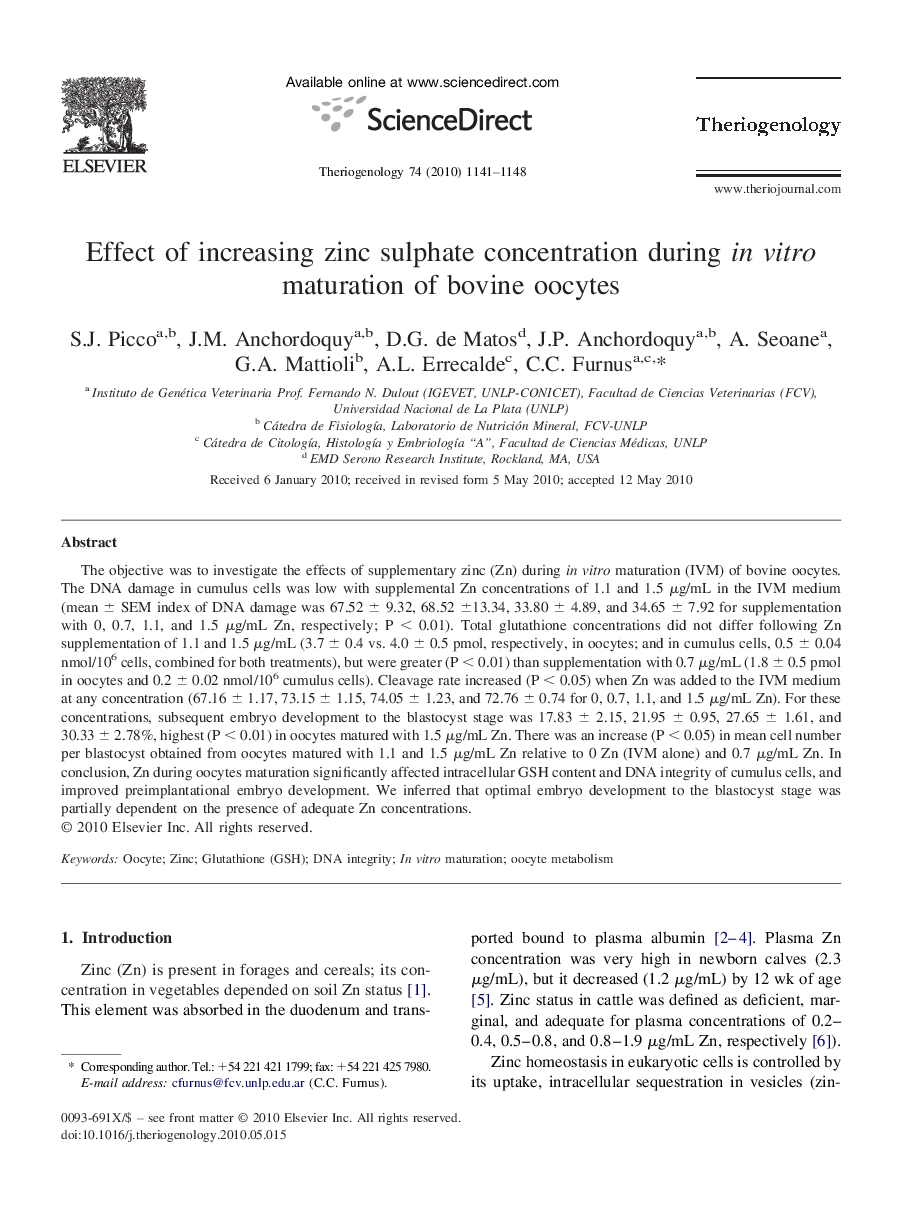| Article ID | Journal | Published Year | Pages | File Type |
|---|---|---|---|---|
| 2096289 | Theriogenology | 2010 | 8 Pages |
The objective was to investigate the effects of supplementary zinc (Zn) during in vitro maturation (IVM) of bovine oocytes. The DNA damage in cumulus cells was low with supplemental Zn concentrations of 1.1 and 1.5 μg/mL in the IVM medium (mean ± SEM index of DNA damage was 67.52 ± 9.32, 68.52 ±13.34, 33.80 ± 4.89, and 34.65 ± 7.92 for supplementation with 0, 0.7, 1.1, and 1.5 μg/mL Zn, respectively; P < 0.01). Total glutathione concentrations did not differ following Zn supplementation of 1.1 and 1.5 μg/mL (3.7 ± 0.4 vs. 4.0 ± 0.5 pmol, respectively, in oocytes; and in cumulus cells, 0.5 ± 0.04 nmol/106 cells, combined for both treatments), but were greater (P < 0.01) than supplementation with 0.7 μg/mL (1.8 ± 0.5 pmol in oocytes and 0.2 ± 0.02 nmol/106 cumulus cells). Cleavage rate increased (P < 0.05) when Zn was added to the IVM medium at any concentration (67.16 ± 1.17, 73.15 ± 1.15, 74.05 ± 1.23, and 72.76 ± 0.74 for 0, 0.7, 1.1, and 1.5 μg/mL Zn). For these concentrations, subsequent embryo development to the blastocyst stage was 17.83 ± 2.15, 21.95 ± 0.95, 27.65 ± 1.61, and 30.33 ± 2.78%, highest (P < 0.01) in oocytes matured with 1.5 μg/mL Zn. There was an increase (P < 0.05) in mean cell number per blastocyst obtained from oocytes matured with 1.1 and 1.5 μg/mL Zn relative to 0 Zn (IVM alone) and 0.7 μg/mL Zn. In conclusion, Zn during oocytes maturation significantly affected intracellular GSH content and DNA integrity of cumulus cells, and improved preimplantational embryo development. We inferred that optimal embryo development to the blastocyst stage was partially dependent on the presence of adequate Zn concentrations.
